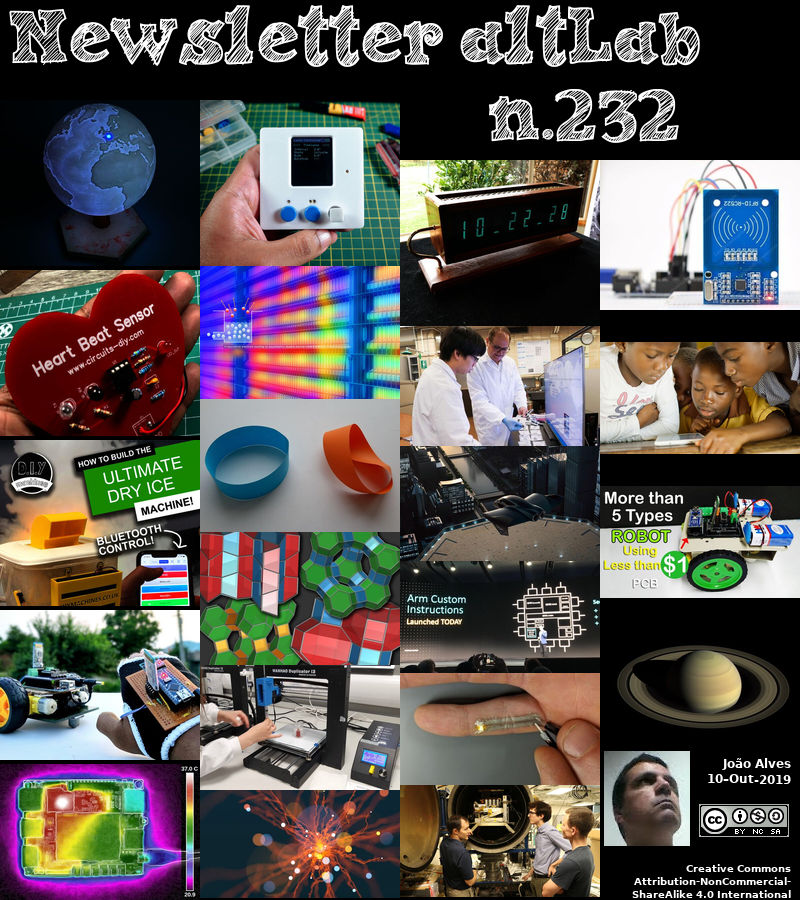2019-10-10 - Nº 232
Editorial
Esta é a Newsletter Nº 232 que se apresenta com o mesmo formato que as anteriores. Se gostar da Newsletter partilhe-a!
Todas as Newsletters encontram-se indexadas no link.
Esta Newsletter tem os seguintes tópicos:
Faz hoje anos que nascia, em 1731, Henry Cavendish. Este químico e físico inglês determinou a massa e a densidade da Terra. Ele investigou as propriedades do hidrogénio e do dióxido de carbono, incluindo a comparação entre a sua densidade e a do ar. Cavendish também mostrou que a água era um composto e mediu o calor específico de várias substâncias. Os seus manuscritos (publicados em 1879) revelaram descobertas que ele fez em electrostática antes de Coulomb, Ohm e Faraday - incluindo a dedução da lei do quadrado inverso da atracção e repulsão electrostática. Ele também encontrou capacidade indutiva específica.
Faz também anos hoje que nascia, em 1892, Earle Dickson. Este inventor americano ficou conhecido pela invenção do penso rápido. O seu emprego era como comprador de algodão na Johnson & Johnson, onde sua sugestão de torná-lo um produto se tornou uma realidade.
Por fim, faz anos hoje que nascia, em 1896, Lester Germer. Este Físico americano com o seu colega Clinton Joseph Davisson, conduziu uma experiência que foi a primeira a demonstrar as propriedades das ondas do electrão. Eles mostraram que um feixe de electrões dispersos por um cristal produz um padrão de difracção característico de uma onda. Esta experiência confirmou a hipótese de Louis-Victor de Broglie, fundador da mecânica das ondas, de que o electrão deveria mostrar as propriedades de uma onda electromagnética e de uma partícula. Ele também estudou termiônica, erosão de metais e física de contacto.
Nesta semana que passou, o CEO da Arm, Simon Segars anunciou, na sua conferencia Arm® TechCon 2019, o Arm Custom Instructions, um novo recurso da arquitetura Armv8-M. As instruções personalizadas da Arm serão implementadas inicialmente nos CPUs Arm Cortex®-M33 a partir do primeiro semestre de 2020, sem custos adicionais para licenciamentos novos e existentes, permitindo que os designers de SoC adicionem as suas próprias instruções para aplicações incorporadas específicas e de IoT, sem risco de fragmentação de software.
Também nesta semana que passou uma equipa liderada por Scott S. Sheppard, da Carnegie, encontrou 20 novas luas a orbitar Saturno. Isto aumenta o número total de luas do planeta para 82, superando Júpiter, que tem 79. A descoberta foi anunciada nesta segunda-feira pelo Minor Planet Center da União Astronómica Internacional. Cada uma das luas recém-descobertas tem cerca de cinco quilómetros de diâmetro. Dezessete delas orbitam o planeta para trás, ou em uma direcção oposta, significando que seu movimento é oposto à rotação do planeta em torno de seu eixo. As outras três luas orbitam na mesma direcção em que Saturno gira.
E é já amanhã que vamos ter mais uma Lisbon Maker Faire, desta vez organizado pela equipa do Fab Lab Benfica, e localizado na Escola Superior de Educação do Politécnico de Lisboa. O horário na sexta-feira é da 10:00 às 18:00 e no sábado das 10:00 às 19:30. As entradas são grátis por isso apareçam!
Na Newsletter desta semana apresentamos diversos projetos de maker. É apresentada a revista newelectronics de 8 de Outubro.
 João Alves ([email protected])
João Alves ([email protected])
O conteúdo da Newsletter encontra-se sob a licença  Creative Commons Attribution-NonCommercial-ShareAlike 4.0 International License.
Creative Commons Attribution-NonCommercial-ShareAlike 4.0 International License.
Novidades da Semana
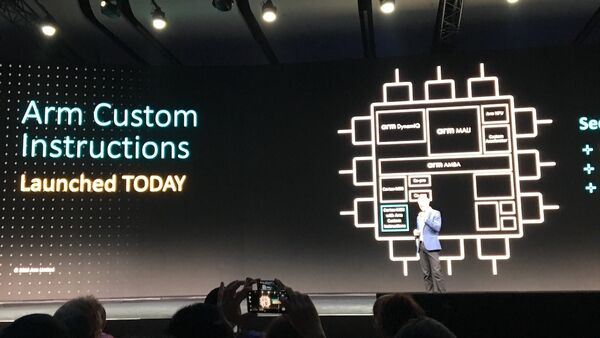
Arm Enables Custom Instructions for embedded CPUs
"Today at Arm® TechCon 2019, Arm CEO Simon Segars announced Arm Custom Instructions, a new feature for the Armv8-M architecture. Arm Custom Instructions will initially be implemented in Arm Cortex®-M33 CPUs starting in the first half of 2020 at no additional cost to new and existing licensees, enabling SoC designers to add their own instructions for specific embedded and IoT applications without risk of software fragmentation. “A world of a trillion secure intelligent devices will be built on a diversity of complex use cases requiring increased synergy between hardware and software design,” said Dipti Vachani, senior vice president and general manager, Automotive and IoT Line of Business, Arm. “We have engineered Arm Custom Instructions to fuel closer hardware and software co-design efforts toward achieving application-specific acceleration while unlocking greater device differentiation.” The CPU: A chassis for Arm silicon partner innovation Architected as part of the evolution of the Armv8-M architecture with secure Arm TrustZone™ technology, Arm Custom Instructions are based on a simple guiding principle; the CPU is a chassis for Arm silicon partner innovation. This approach gives chip designers the opportunity to push performance and efficiency further by adding their unique application-specific features into Cortex-M33 CPUs. Arm Custom Instructions are enabled by modifications to the CPU that reserve encoding space for designers to easily add custom datapath extensions while maintaining the integrity of the existing software ecosystem." [...]

Saturn Surpasses Jupiter After The Discovery Of 20 New Moons And You Can Help Name Them!
"A team led by Carnegie's Scott S. Sheppard has found 20 new moons orbiting Saturn. This brings the ringed planet’s total number of moons to 82, surpassing Jupiter, which has 79. The discovery was announced Monday by the International Astronomical Union’s Minor Planet Center. Each of the newly discovered moons is about five kilometers, or three miles, in diameter. Seventeen of them orbit the planet backwards, or in a retrograde direction, meaning their movement is opposite of the planet's rotation around its axis. The other three moons orbit in the prograde—the same direction as Saturn rotates." [...]
Outras Notícias
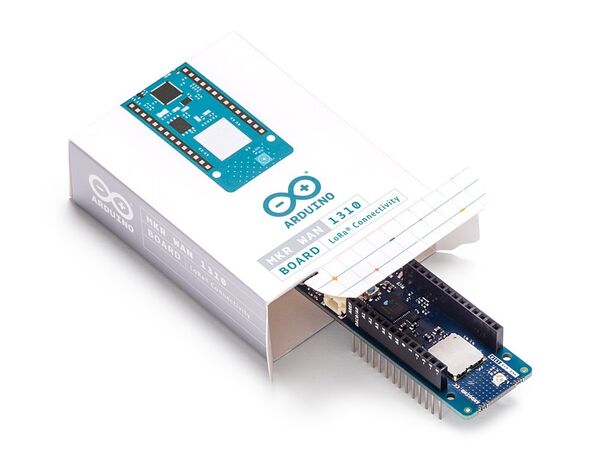
New MKR WAN 1310 for LoRa connectivity comes with 2MByte Flash and extended battery life
"We’re excited to announce the launch of the Arduino MKR WAN 1310, which offers a practical and cost-effective solution for those looking to add LoRa connectivity to their projects. The new MKR WAN 1310 enables you to connect your sensors and actuators over long distances harnessing the power of the LoRa wireless protocol or throughout LoRaWAN networks. This open source board can be connected to: - Arduino Create - To your own LoRa network using the Arduino Pro Gateway for LoRa - To existing LoRaWAN infrastructure like The Things Network - Or even to other boards using the direct connectivity mode The latest low-power architecture has considerably improved the battery life on the MKR WAN 1310. When properly configured, the power consumption is now as low as 104uA! It is also possible to use the USB port to supply power (5V) to the board; run the board with or without batteries – the choice is yours. Based on the Microchip SAM D21 low-power processor and a Murata CMWX1ZZABZ LoRa module, the MKR WAN 1310 comes complete with an ECC508 crypto chip, a battery charger and 2MByte SPI Flash, as well as improved control of the board’s power consumption." [...]
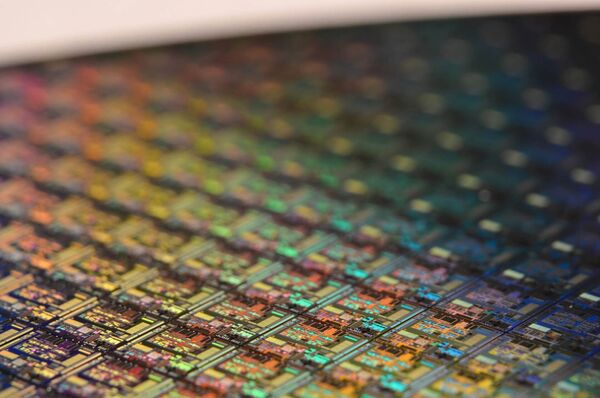
TSMC’s N7+ Technology is First EUV Process Delivering Customer Products to Market in High Volume
"TSMC (TWSE: 2330, NYSE: TSM) today announced that its seven-nanometer plus (N7+), the industry’s first commercially available Extreme Ultraviolet (EUV) lithography technology, is delivering customer products to market in high volume. The N7+ process with EUV technology is built on TSMC’s successful 7nm node and paves the way for 6nm and more advanced technologies. The N7+ volume production is one of the fastest on record. N7+, which began volume production in the second quarter of 2019, is matching yields similar to the original N7 process that has been in volume production for more than one year. N7+ is also providing improved overall performance. When compared to the N7 process, N7+ provides 15% to 20% more density and improved power consumption, making it an increasingly popular choice for the industry’s next-wave products." [...]

The path to prosperity through access to high-speed internet
"Last year, the world reached a major modern milestone – as of 2018, half of the world’s population is online with some form of internet connection. The bad news is that, despite this progress, this status quo still puts billions of people on the wrong side of the digital divide. Leaving half the world without access to the electricity of today’s age – internet access, and increasingly at broadband speeds – means that existing inequalities, poverty and insecurity will persist, worsen and become increasingly difficult to address. Efforts to accelerate internet access globally, with a focus on developing nations, are not new. But it’s clear that the world needs a new approach to this work. The UN State of Broadband Report found that broadband adoption has slowed, and progress is especially elusive in low-income countries and rural areas across the globe." [...]
Dialog Semiconductor to Acquire Creative Chips adding Industrial IoT Products to its Portfolio
" Dialog Semiconductor plc (XETRA:DLG), a leading provider of power management, charging, AC/DC power conversion, Wi-Fi and Bluetooth® low energy technology, today announced it has signed a definitive agreement to acquire Creative Chips GmbH, a prominent supplier of Integrated Circuits (ICs) to the Industrial Internet of Things (IIoT) market. Headquartered in Bingen close to Frankfurt, Germany, with an additional design center in Dresden, Creative Chips is a fabless semiconductor company with a growing IC business supplying a broad portfolio of industrial Ethernet and other mixed-signal products to top-tier, blue-chip manufacturers of industrial and building automation systems. The technology is optimized to efficiently connect large numbers of IIoT sensors to industrial networks. Building on its long-established custom IC business, Creative Chips is also developing a range of highly complementary standard IO-Link IC products, driving broader connectivity in the Industry 4.0 revolution. The new acquisition is strategic for Dialog to establish itself as a proven supplier, well-positioned to capture the significant growth potential of the Industrial IoT market. It also provides Dialog with a rich portfolio of core IC products and a broad library of relevant analog, digital and RF technologies." [...]

Porsche and Boeing to Partner on Premium Urban Air Mobility Market
"Porsche and Boeing signed a Memorandum of Understanding to explore the premium urban air mobility market and the extension of urban traffic into airspace. With this partnership, both companies will leverage their unique market strengths and insights to study the future of premium urban air mobility vehicles. “Porsche is looking to enhance its scope as a sports car manufacturer by becoming a leading brand for premium mobility. In the longer term, this could mean moving into the third dimension of travel,” says Detlev von Platen, Member of the Executive Board for Sales and Marketing at Porsche AG. “We are combining the strengths of two leading global companies to address a potential key market segment of the future.” As part of the partnership, the companies will create an international team to address various aspects of urban air mobility, including analysis of the market potential for premium vehicles and possible use cases. Boeing, Porsche and Aurora Flight Sciences, a subsidiary of Boeing, are developing a concept for a fully electric vertical takeoff and landing vehicle." [...]
Ciência e Tecnologia
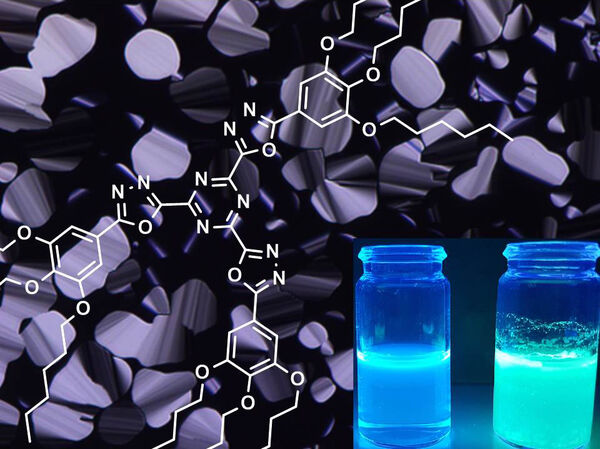
Researchers at Mainz University synthesize new liquid crystals that will allow the directed transmission of electricity
"Organic power cable for electronic components Liquid and solid – most people are unaware that there can be states in between. Liquid crystals are representative of one such state. While the molecules in liquids swim around at random, neighboring molecules in liquid crystals are aligned as in regular crystal grids, but the material is still liquid. Liquid crystals are thus an example of an intermediate state that is neither really solid nor really liquid. They flow like a liquid, and yet their molecules are grouped in small, regularly ordered units. A particular application of liquid crystals is optical imaging technology as in the screens of televisions, smartphones, and calculators." [...]
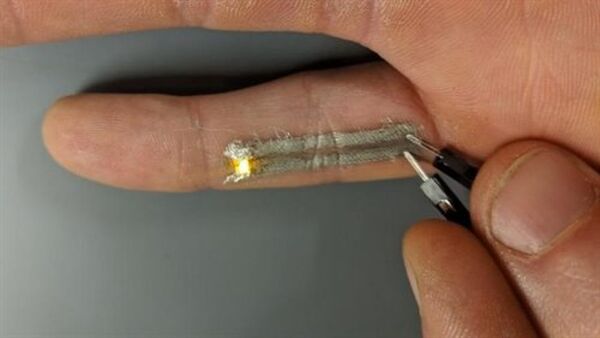
Printed Electronics Open Way for Electrified Tattoos and Personalized Biosensors
"The first demonstration of a fully print-in-place electronics technique is gentle enough to work on surfaces as delicate as human skin and paper Electrical engineers at Duke University have devised a fully print-in-place technique for electronics that is gentle enough to work on delicate surfaces including paper and human skin. The advance could enable technologies such as high-adhesion, embedded electronic tattoos and bandages tricked out with patient-specific biosensors. The techniques are described in a series of papers published online July 9 in the journal Nanoscale and on October 3 in the journal ACS Nano. “When people hear the term ‘printed electronics,’ the expectation is that a person loads a substrate and the designs for an electronic circuit into a printer and, some reasonable time later, removes a fully functional electronic circuit,” said Aaron Franklin, the James L. and Elizabeth M. Vincent Associate Professor of Electrical and Computer Engineering at Duke. “Over the years there have been a slew of research papers promising these kinds of ‘fully printed electronics,’ but the reality is that the process actually involves taking the sample out multiple times to bake it, wash it or spin-coat materials onto it,” Franklin said. “Ours is the first where the reality matches the public perception.” “Some of the more exotic applications include intimately connected electronic tattoos that could be used for biological tagging or unique detection mechanisms, rapid prototyping for on-the-fly custom electronics, and paper-based diagnostics that could be integrated readily into customized bandages.” The concept of so-called electronic tattoos were first developed in the late 2000s at the University of Illinois by John A. Rogers, who is now the Louis Simpson and Kimberly Querrey Professor of Materials Science and Engineering at Northwestern University." [...]
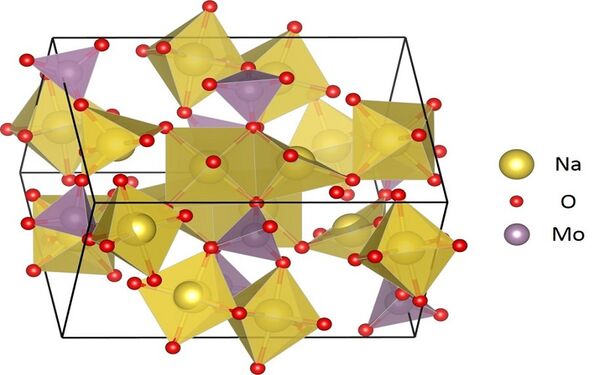
Bigger, better conductive crystals a boon for electronics
"A*STAR researchers have developed a method to generate large monolayer crystals of molybdenum disulfide for use in scaled-down and flexible electronics. Electronic devices are becoming smaller in size, yet the number of functions each gadget can perform is constantly increasing. Driving these improvements is an essential component known as field-effect transistor (FET). The most common FET in modern times—called MOSFET, short for metal–oxide–semiconductor field-effect transistor—was built using silicon around the end of the 1950s. However, silicon-based FETs that are miniaturized below a certain size face issues arising from the short channel effect, which negatively impacts the flow and control of electric current. Scientists led by Dongzhi Chi at the Institute of Materials Research and Engineering (IMRE), in collaboration with colleagues at the National University of Singapore and Shenzhen University, China, are now seeking to circumvent this limitation with an alternative material: molybdenum disulfide." [...]
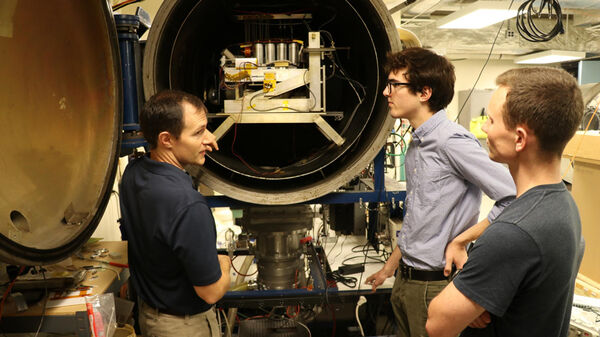
New salt-based propellant proven compatible in dual-mode rocket engines
"For dual-mode rocket engines to be successful, a propellant must function in both combustion and electric propulsion systems. Researchers from the University of Illinois at Urbana-Champaign used a salt-based propellant that had already been proven successful in combustion engines, and demonstrated its compatibility with electrospray thrusters. “We need a propellant that will work in both modes,” said Joshua Rovey, associate professor in the Department of Aerospace Engineering in The Grainger College of Engineering at the U of I. “So, we created a propellant that is a mixture of two commercially available salts--hydroxylammonium nitrate and emim ethylsulfate. We have published other research papers showing that salt propellants work in the high-acceleration combustion mode. Now we know that this unique combination of salts will also work in the electric fuel-efficient mode.” With electrospray or colloid propulsion, the thrusters electrostatically accelerate ions and droplets from these liquids." [...]
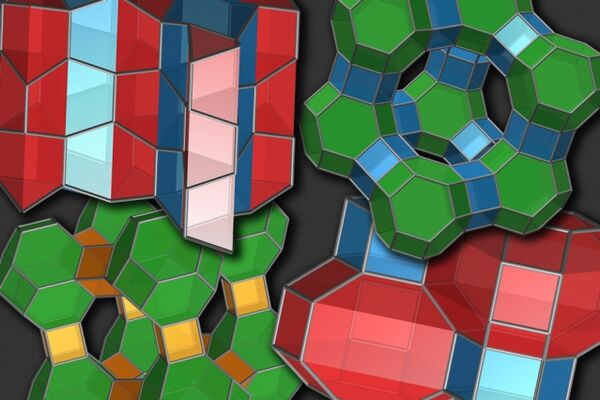
A new mathematical approach to understanding zeolites
"Study of minerals widely used in industrial processes could lead to discovery of new materials for catalysis and filtering. Zeolites are a class of natural or manufactured minerals with a sponge-like structure, riddled with tiny pores that make them useful as catalysts or ultrafine filters. But of the millions of zeolite compositions that are theoretically possible, so far only about 248 have ever been discovered or made. Now, research from MIT helps explain why only this small subset has been found, and could help scientists find or produce more zeolites with desired properties. The new findings are being reported this week in the journal Nature Materials, in a paper by MIT graduate students Daniel Schwalbe-Koda and Zach Jensen, and professors Elsa Olivetti and Rafael Gomez-Bombarelli. Previous attempts to figure out why only this small group of possible zeolite compositions has been identified, and to explain why certain types of zeolites can be transformed into specific other types, have failed to come up with a theory that matches the observed data." [...]
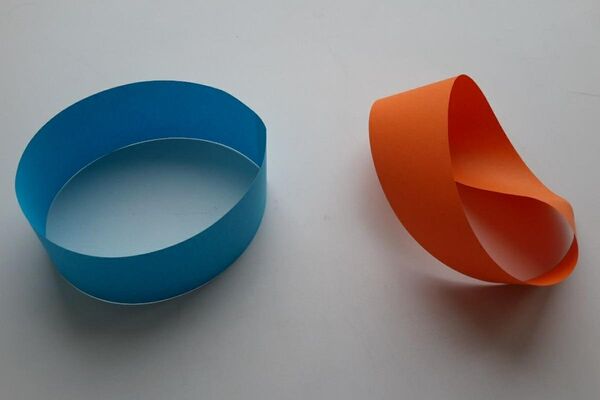
Theoretical physicists have predicted the existence of previously unknown topological phases of crystalline solids
"An international group of scientists, including Alexey Soluyanov, Senior Research Associate at St Petersburg University, have proved the existence of new topological phases of metals which lie outside any previously developed classifications. The results of the research have been published in one of the most prestigious scientific journals worldwide – Science. They answer some of the fundamental questions in physics and might be found useful in developing a quantum computer. In order to understand what a topological phase is, it might be useful to recall the Moebius band, which you probably remember from the school programme. If you take a paper strip and join its ends, you will get a ring. However, if you take a paper strip, give it a half twist and then join its ends, you will get a Moebius band." [...]

Electrochemistry breakthrough simplifies creation of coveted molecules needed for drugs, electronics
"New method for making hindered ethers significantly improves production yield while reducing expense and reaction steps A new chemistry method from scientists at Scripps Research greatly simplifies the creation of an important class of compounds called hindered ethers, which are integral to many drugs and commercial products. Hindered ethers are often coveted for their special properties, but until now have required laborious methods to synthesize. The new method, reported in Nature, may also help bring “electrochemistry” into the mainstream of modern medicinal chemistry. Electrochemistry involves passing a current through a compound in liquid solution to generate a key reactive component. Traditional electrochemistry techniques are often very limited in their scope, but the Scripps Research scientists demonstrated the broad versatility of their technique by showing that it can perform faster, higher-yield syntheses of dozens of hindered ethers used in products today. “These are compounds that historically have required more than a dozen steps and more than a week of work to synthesize using standard methods,” says Phil Baran, PhD, the Darlene Shiley Chair in Chemistry at Scripps Research and senior author of the study." [...]
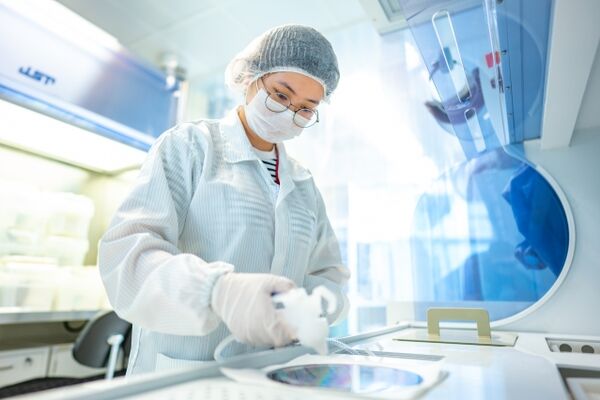
SMART develops a way to commercially manufacture integrated silicon III-V chips
"New method from MIT’s research enterprise in Singapore paves the way for improved optoelectronic and 5G devices. The Singapore-MIT Alliance for Research and Technology (SMART), MIT’s research enterprise in Singapore, has announced the successful development of a commercially viable way to manufacture integrated silicon III-V chips with high-performance III-V devices inserted into their design. In most devices today, silicon-based CMOS chips are used for computing, but they are not efficient for illumination and communications, resulting in low efficiency and heat generation. This is why current 5G mobile devices on the market get very hot upon use and can shut down after a short time. This is where III-V semiconductors are valuable. III-V chips are made with compounds including elements in the third and fifth columns of the periodic table, such as gallium nitride (GaN) and indium gallium arsenide (InGaAs)." [...]
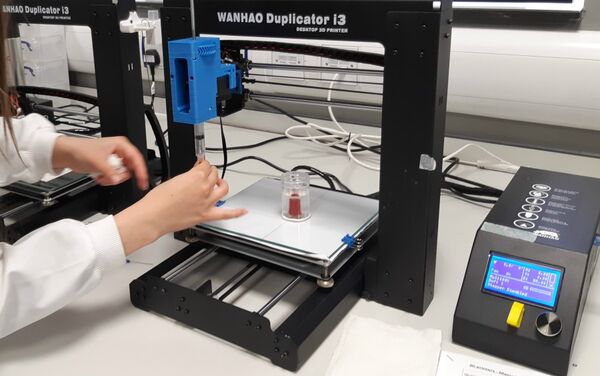
New 3D printing technique for biomaterials
"A new way of 3D printing soft materials such as gels and collagens offers a major step forward in the manufacture of artificial medical implants. Developed by researchers at the University of Birmingham, the technique could be used to print soft biomaterials that could be used to repair defects in the body. Printing soft materials using additive manufacturing has been a big challenge for scientists because if they are not supported, they sag and lose their shape. The new technique, called Suspended Layer Additive Manufacturing (SLAM), uses a polymer-based hydrogel in which the particles have been manipulated to create a self-healing gel. Liquids or gels can be injected directly into this medium and built up in layers to create a 3D shape. The method offers an alternative to existing techniques which use gels that have been minced to form a slurry bath into which the printed material is injected." [...]
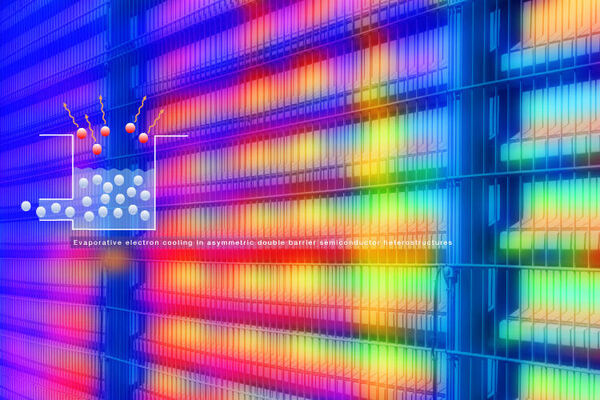
Keeping Cool with Quantum Wells
"University of Tokyo researchers have announced a new approach for electrical cooling without the need for moving parts. By applying a bias voltage to quantum wells made of the semiconductor aluminum gallium arsenide, electrons can be made to shed some of their heat in a process called "evaporative cooling." Devices based on this principle may be added to electronic circuit boards using conventional semiconductor fabrication methods to help smartphones and laptops avoid performance issues caused by high temperatures. Consumers love portable electronics. But as smartphones, tablets, and laptops become smaller and more powerful, the possibility of overheating becomes an ever more pressing concern. Currently available fans are noisy, bulky, and have moving parts that can fail." [...]
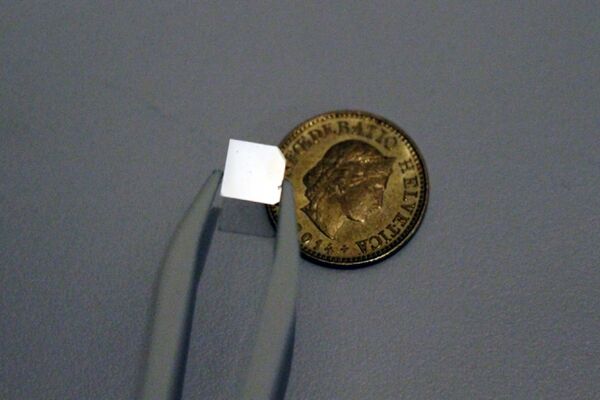
Scientists observe a single quantum vibration under ordinary conditions
"Studying a common material at room temperature, researchers bring quantum behavior “closer to our daily life.” When a guitar string is plucked, it vibrates as any vibrating object would, rising and falling like a wave, as the laws of classical physics predict. But under the laws of quantum mechanics, which describe the way physics works at the atomic scale, vibrations should behave not only as waves, but also as particles. The same guitar string, when observed at a quantum level, should vibrate as individual units of energy known as phonons. Now scientists at MIT and the Swiss Federal Institute of Technology have for the first time created and observed a single phonon in a common material at room temperature. Until now, single phonons have only been observed at ultracold temperatures and in precisely engineered, microscopic materials that researchers must probe in a vacuum. In contrast, the team has created and observed single phonons in a piece of diamond sitting in open air at room temperature." [...]
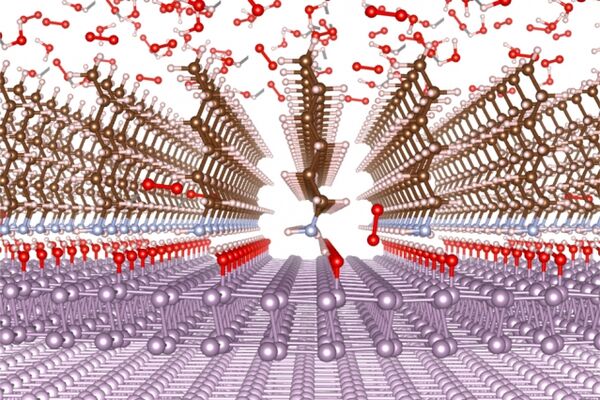
A new way to corrosion-proof thin atomic sheets
"Ultrathin coating could protect 2D materials from corrosion, enabling their use in optics and electronics. A variety of two-dimensional materials that have promising properties for optical, electronic, or optoelectronic applications have been held back by the fact that they quickly degrade when exposed to oxygen and water vapor. The protective coatings developed thus far have proven to be expensive and toxic, and cannot be taken off. Now, a team of researchers at MIT and elsewhere has developed an ultrathin coating that is inexpensive, simple to apply, and can be removed by applying certain acids. The new coating could open up a wide variety of potential applications for these “fascinating” 2D materials, the researchers say. Their findings are reported this week in the journal PNAS, in a paper by MIT graduate student Cong Su; professors Ju Li, Jing Kong, Mircea Dinca, and Juejun Hu; and 13 others at MIT and in Australia, China, Denmark, Japan, and the U.K. Research on 2D materials, which form thin sheets just one or a few atoms thick, is “a very active field,” Li says." [...]
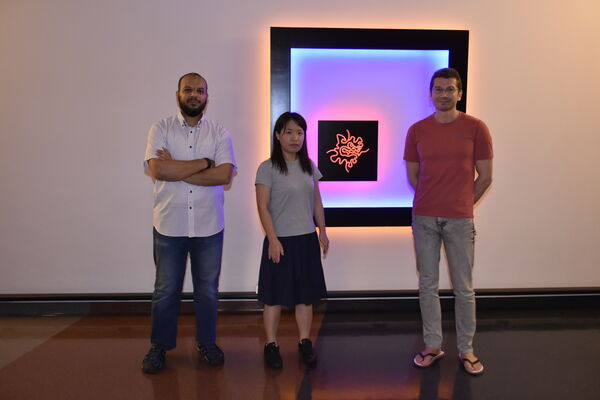
New Method for Detecting Quantum States of Electrons
"Quantum computing harnesses enigmatic properties of small particles to process complex information. But quantum systems are fragile and error-prone, and useful quantum computers have yet to come to fruition. Researchers in the Quantum Dynamics Unit at the Okinawa Institute of Science and Technology Graduate University (OIST) devised a new method — called image charge detection — to detect electrons’ transitions to quantum states. Electrons can serve as quantum bits, the smallest unit of quantum information; these bits are foundational to larger computational systems. Quantum computers may be used to understand the mechanism of superconductivity, cryptography, artificial intelligence, among other applications. “There is a huge gap between controlling few quantum bits and building a quantum computer,” said Dr. Erika Kawakami, the lead author of a new study, published in Physical Review Letters with editor’s suggestion." [...]
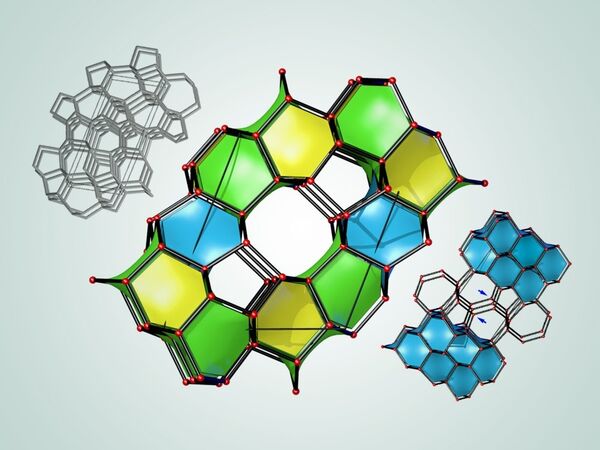
Hard as a diamond? Scientists predict new forms of superhard carbon
"A study identifies dozens of new carbon structures that are expected to be superhard, including some that may be about as hard as diamonds Superhard materials can slice, drill and polish other objects. They also hold potential for creating scratch-resistant coatings that could help keep expensive equipment safe from damage. Now, science is opening the door to the development of new materials with these seductive qualities. Researchers have used computational techniques to identify 43 previously unknown forms of carbon that are thought to be stable and superhard — including several predicted to be slightly harder than or nearly as hard as diamonds. Each new carbon variety consists of carbon atoms arranged in a distinct pattern in a crystal lattice. The study — published on Sept. 3 in the journal npj Computational Materials — combines computational predictions of crystal structures with machine learning to hunt for novel materials." [...]
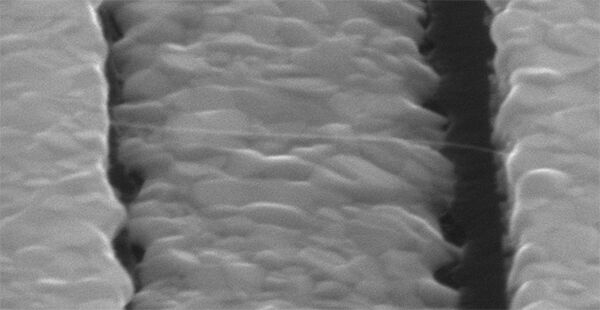
Cooling nanotube resonators with electrons
"In a study in Nature Physics, ICFO researchers report on a technique that uses electron transport to cool a nanomechanical resonator near the quantum regime. Mechanical resonators have been used with great success as new resources in quantum technology. Carbon nanotube mechanical resonators have shown to be excellent ultra-high sensitive devices for the study of new physical phenomena at the nanoscale (e.g. spin physics, quantum electron transport, surface science, and light-matter interaction). Mechanical resonators are often used to observe and manipulate the quantum states of the motion of relatively large systems. However, the drawback lies in the thermal noise force, which, if not controlled properly, ends up diluting any possibility of observing the quantum effects." [...]
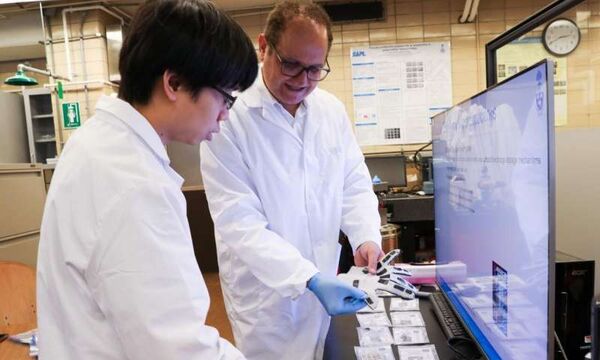
Soft robot programmed to move like an inchworm
"U of T Engineering researchers have created a miniature robot that can crawl with inchworm-like motion. The underlying technology could one day transform industries from aviation to smart wearables. Professor Hani Naguib (MIE, MSE) and his group specialize in smart materials. One line of their research focuses on electrothermal actuators (ETAs), devices made of specialized polymers that can be programmed to physically respond to electrical or thermal changes. For example, an ETA could be programmed to mimic muscle reflexes, tensing up when cold and relaxing when hot. Naguib and his team are applying this technology to the robotics field, creating ‘soft’ robots that can crawl and curl." [...]
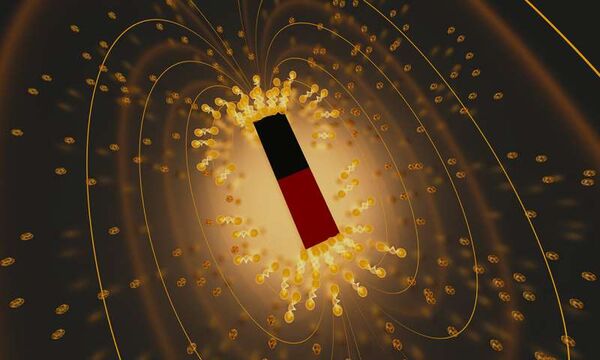
Rare “Lazarus Superconductivity” Observed in Promising, Rediscovered Material
"Researchers from the University of Maryland, the National Institute of Standards and Technology (NIST), the National High Magnetic Field Laboratory (National MagLab) and the University of Oxford have observed a rare phenomenon called re-entrant superconductivity in the material uranium ditelluride. The discovery furthers the case for uranium ditelluride as a promising material for use in quantum computers. Nicknamed “Lazarus superconductivity” after the biblical figure who rose from the dead, the phenomenon occurs when a superconducting state arises, breaks down, then re-emerges in a material due to a change in a specific parameter—in this case, the application of a very strong magnetic field. The researchers published their results on October 7, 2019, in the journal Nature Physics. Once dismissed by physicists for its apparent lack of interesting physical properties, uranium ditelluride is having its own Lazarus moment. The current study is the second in as many months (both published by members of the same research team) to demonstrate unusual and surprising superconductivity states in the material." [...]
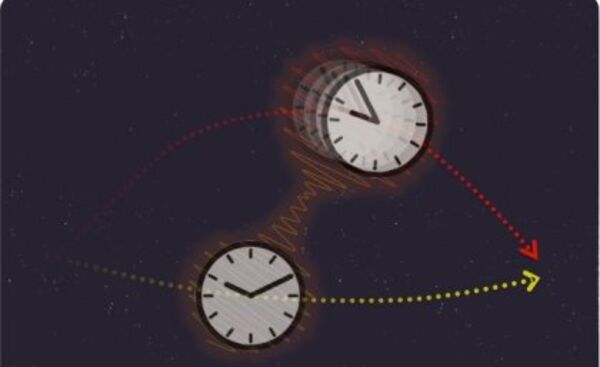
Quantum paradox experiment may lead to more accurate clocks and sensors
"More accurate clocks and sensors may result from a recently proposed experiment, linking an Einstein-devised paradox to quantum mechanics. University of Queensland physicist Dr Magdalena Zych said the international collaboration aimed to test Einstein’s twin paradox using quantum particles in a ‘superposition’ state. “The twin paradox is one of the most counterintuitive predictions of relativity theory,” Dr Zych said. “It says that time can pass at different speeds for people at different distances to an enormous mass or travelling with different velocities. “For example, relative to a reference clock far from any massive object, a clock closer to a mass or moving at high speed will tick slower. “This creates a ‘twin paradox’, where one of a pair of twins departs on a fast-speed journey while the other stays behind." [...]
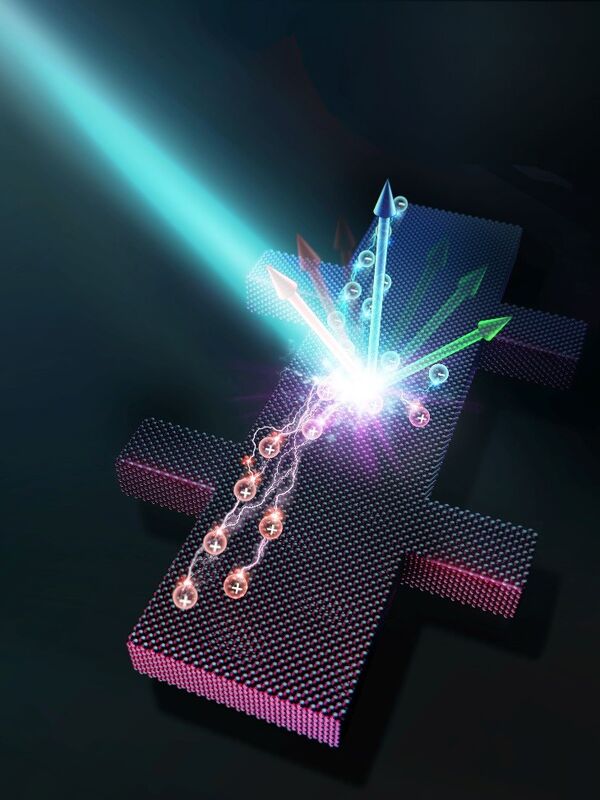
Unlocking a 140-year-old Secret in Physics
"Semiconductors are the basic building blocks of today’s digital, electronic age, providing us a multitude of devices that benefit our modern life, including computer, smartphones and other mobile devices. Improvements in semiconductor functionality and performance are likewise enabling next-generation applications of semiconductors for computing, sensing and energy conversion. Yet researchers have long struggled with limitations in our ability to fully understand the electronic charges inside semiconductor devices and advanced semiconductor materials, limiting our ability to drive further advances. In a new study in the journal Nature [1], an IBM Research-led collaboration describes an exciting breakthrough in a 140-year-old mystery in physics — one that enables us to unlock the physical characteristics of semiconductors in much greater detail and aid in the development of new and improved semiconductor materials. To truly understand the physics of semiconductors, we first need to know the fundamental properties of the charge carriers inside the materials, whether those particles are positive or negative, their speed under an applied electric field and how densely they are packed in the material. Physicist Edwin Hall found a way to determine those properties in 1879 [2], when he discovered that a magnetic field will deflect the movement of electronic charges inside a conductor and that the amount of deflection can be measured as a voltage perpendicular to the flow of charge as shown in Fig." [...]
Documentação
A documentação é parte essencial do processo de aprendizagem e a Internet além de artigos interessantes de explorar também tem alguma documentação em formato PDF interessante de ler. Todos os links aqui apresentados são para conteúdo disponibilizado livremente pelo editor do livro.
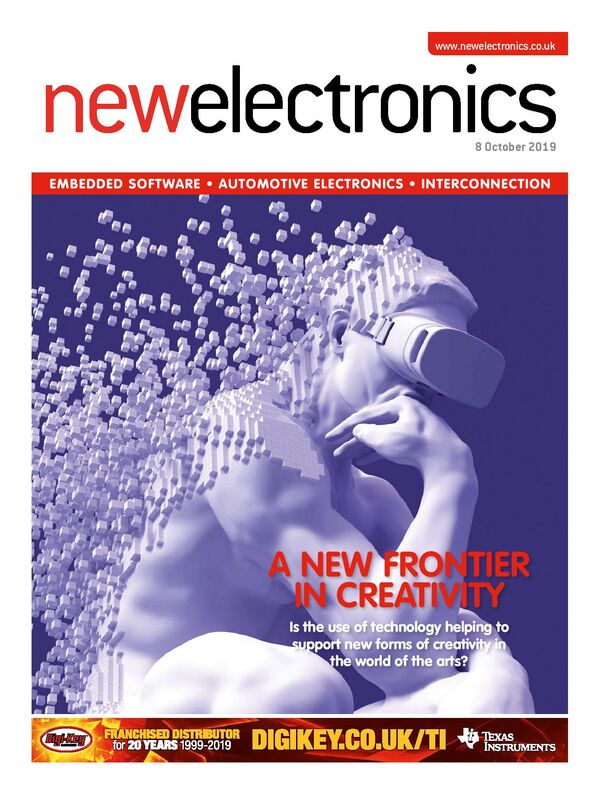
newelectronics 8 Outubro 2019
"New Electronics is a fortnightly magazine focusing on technological innovation, news and the latest developments in the electronics sector. Downloadable as a digital page turner or pdf file, or offered as a hard copy, the New Electronics magazine is available in a format to suit you. " [...]
Projetos Maker
Diversos Projetos interessantes.
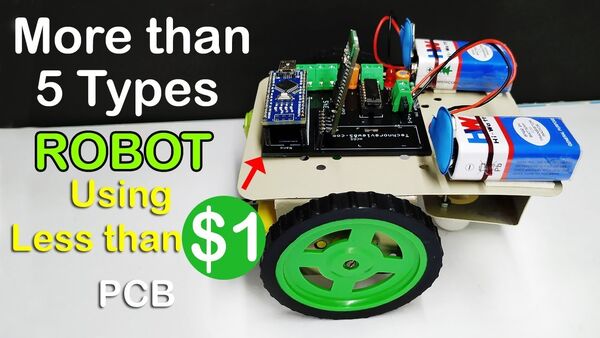
How to make a Bluetooth controlled Arduino robot easily
"Did you decide to make an Arduino robot but worries about a lot of wire Connections?…. Then keep reading this post. I am going to describe, how to make an easy Arduino robot without messy wire connections. You need to make - Arduino nano - L293 D ic, ic base - Capacitor – 100mf/25 v – 2pcs - Male, female header pin - Terminal block- 4 pcs - Led & 1k resistor - Hc 05 Bluetooth module - 9 volt battery or power bank - Any 2wd robot chassis with two 150rpm geared motor - PCB" [...]
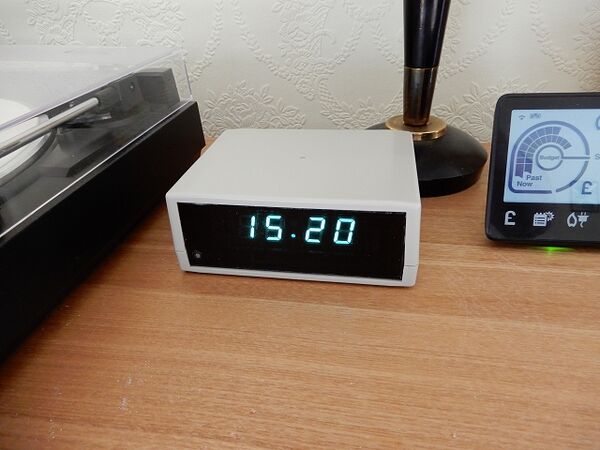
Vacuum Fluorescent Display Clock
"Despite the fact that it's been around for a long time, the vacuum fluorescent display (VFD) is still a very attractive type of display. It's viewable in bright light but is easily dimmable for comfortable viewing in the dark. It has the versatility of a Liquid Crystal Display in that its illuminated elements can be formed into any shape and it doesn't need a backlight. This photo shows three typical types of VFD. The top two have the familiar 7-segment numeric digits and include some extra elements specific to the device they're intended for. The one on the right seems to be for a clock radio with timer and sleep functions." [...]
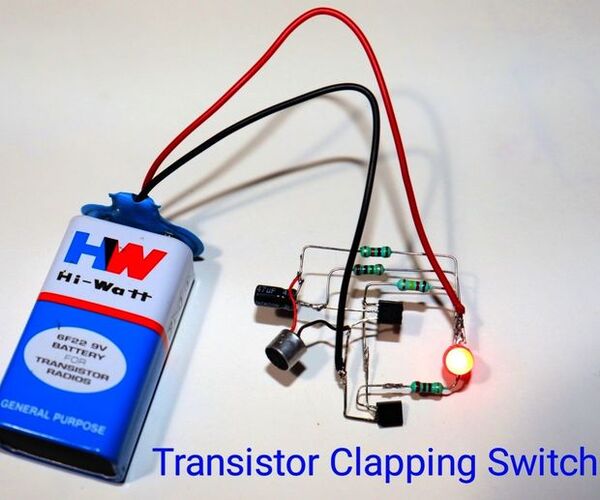
Clapping Switch With BC547 Transistor
"Today I am going to make a circuit of Clapping switch with BC547 Transistor.In Earlier We made clapping switch using LM555 IC. Let's get started," [...]
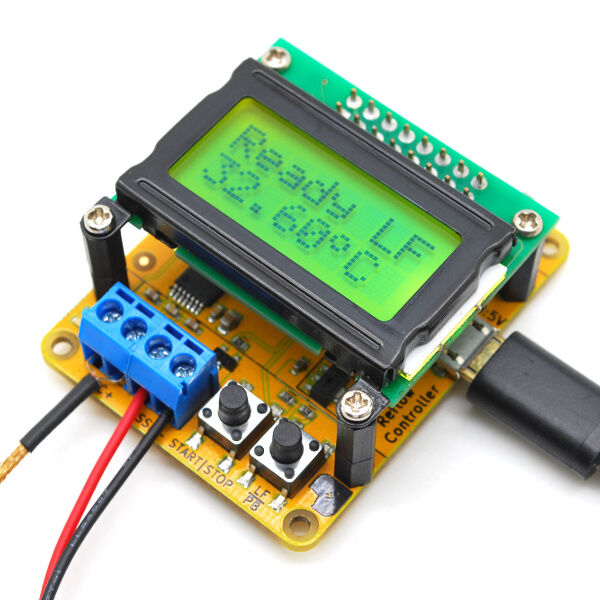
Tiny Reflow Controller with character LCD
"Reflow ovens are an important part of the development of PCB for electronic products when using surface mount components. They provide a route through which PCBs can be quickly populated with SMD components, however, for accurate results, the heat across the oven needs to be controlled and timed correctly. To achieve this, manufacturers use a kind of controller, like “Tiny Reflow Controller”, and with several DIY reflow ovens being used by makers around the world, we thought it would be a good fit for today’s tutorial to focus on the development of DIY Reflow Oven Controller. As mentioned above, reflow oven controllers are quite important in ensuring just the right amount of heat is applied in the soldering process for SMD components and this importance has led to the development of quite a number of different Reflow oven controller projects, which someone can find on the internet. However, for today’s tutorial, we will look at the first version of Rocket Stream’s tiny Reflow Oven Controller v1 which is probably the most well tested DIY reflow oven controller on the internet, as it is the one being used by Rocket Stream themselves for the manufacturing of their boards.The Rocket Stream’s Reflow Oven Controller v1 is powered by the ATtiny1634R and uses the latest thermocouple sensor interface IC MAX31856 from Maxim. It is one of the cheapest designs on the internet as Rocket Stream was able to reduce the overall cost of the design by not using a development board like the Arduino and using as many SMD parts as possible in place of through-hole components, to reduce the time that goes in and the work involved leaving only the terminal block and the LCD connector as the only through-hole components.The ATtiny1634R is one of the new ATtinys we discussed in the last article." [...]
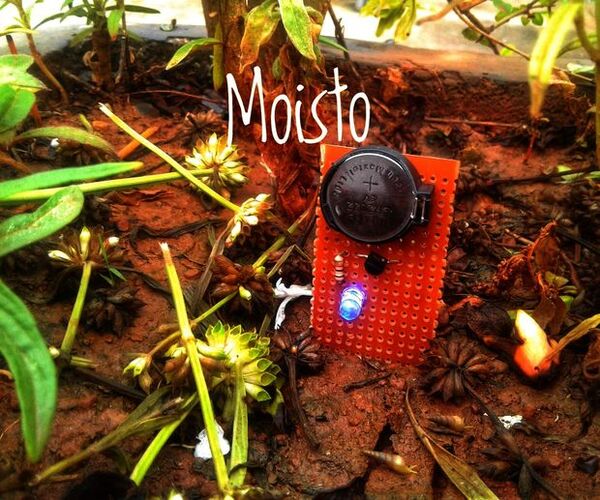
Moisto : Soil Moisture Sensor
"This instructable aims at making a very basic and simple soil moisture sensor. It could also be used as a cheap replacements to the actual soil moisture sensor modules!!! It only uses a single transistor(NPN) which makes the project fun and simple !!! !The circuit is very simple and could also be made without using a general PCB. Circuit schematics is attached !! Supplies: - PCB board - 3V Coin Battery - Battery Holder - LED's - Soldering Iron" [...]
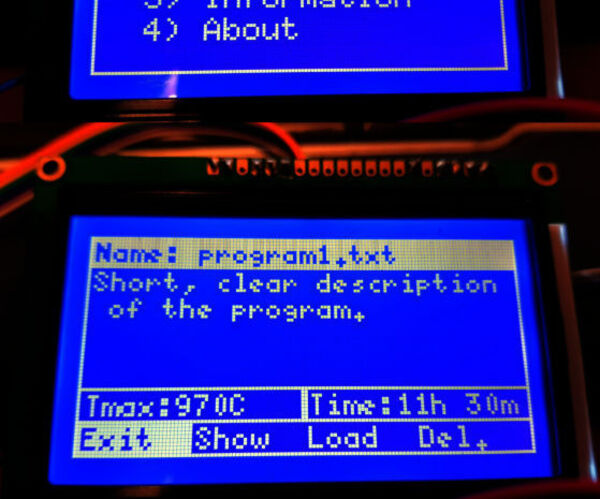
PIDKiln - PID Temperature Controller to Ceramic/Glass/Metal Kiln
"This is "yet another" PID temperature controller. I've made this one, because bought one was crappy and I needed something solid. There are two or three other DIY controllers "on the market" but this one, at least I see it this way :), is much more robust and has all features I needed. Key features: interface accessible both from LCD screen and WWW webpage unlimited (only by storage) kiln programs number, program file size limited to 10KiB (but this is artificial limit - can be extended) internal ESP storage for programs, data, logs (perhaps later SD - but I'm not sure yet) local preferences on disk, editable with Web interface online monitoring, program management, editing, graphs and kiln controll build in clock synchronised with NTP servers (if Internet connected) safety features build in (temperature run out protection, probe failure, SSR failure, kiln insulation failure) simply cool and cheap (comparing to commercially available products) all in one solution Supplies: - ESP32-Wrover board - MAX31855 breakout board (or two) - K-type thermocouple - DC->AC solid state relay Kind of optional, but recommended: - 128x65 dot matrix LCD 12864B v2 - Rotary encoder with button Optional: - DC/AC secondary relay - like SLA-05VDC-SL-C (240V/30A) mechanical relay - Additional MAX31855 board with K-type thermocouple for housing temperature measuring - Perhaps a kiln :)" [...]
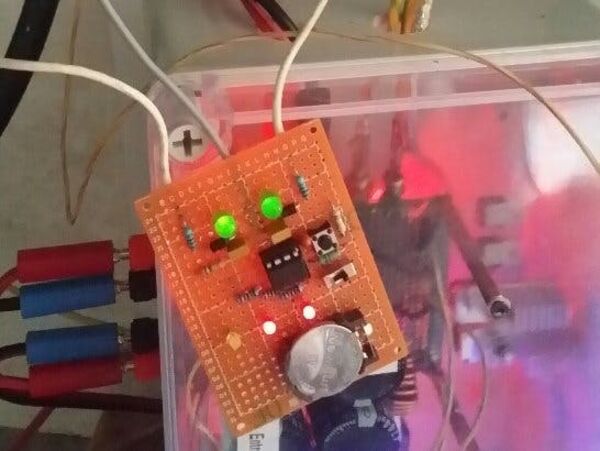
Arduino / ATtiny85 Delta AC 3-Phase Checker
"This is a very simple way to control a 3-phase AC installation in a delta configuration. Story For those who have a wind turbine in their garden, one of the worst thing that can happen is to see the propeller smoothy turn and turn and suddenly stop for a very short time and then turn again, without apparently any reason to stop. What has happened ???? May be it is the 3-wires cable that has a short circuit.... How to see ? With a voltmeter of course, you can verify... but most of time you will only measure that everything is right. Because of course the short-circuit is very brief, very short." [...]
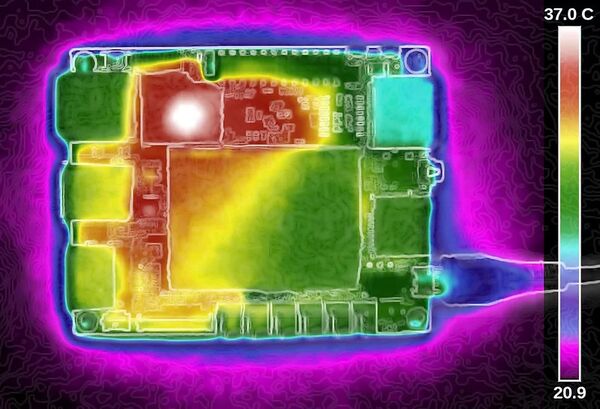
PCB Thermal Management Techniques
"This article will discuss design practices that ensure better thermal management, including some common methods for removing excess heat from a PCB. Most electronic components dissipate heat whenever a current flows through them. The amount of heat depends on the power, device characteristics, and circuit design. Besides the components, the resistance of the electrical connections, copper traces, and vias contribute to some heat, and power losses. To avoid failures or circuit malfunctions, designers should aim at producing PCBs that operate and remain within safe temperature limits. While some circuits will work without additional cooling, there are situations where adding heat sinks, cooling fans, or a combination of several mechanisms is inevitable." [...]
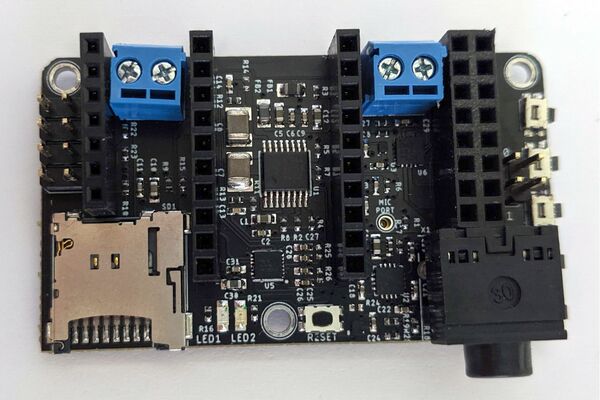
picoAUDIO
"The picoAUDIO is a fully featured audio solution specially made for the TinyPICO ESP32 development board, featuring an I2S Stereo DAC, I2S Mono MEMS Microphone, builtin 3.7W Stereo Amplifier, dedicated Headphone Amplifier, I2C GPIO Extender and built-in MicroSD card reader. We utilise a low power NXP UDA1334A IC featuring a clear digital 16/20/24 bit, 44.1kHz, stereo audio DAC. Accompanying the DAC is a Knowles SPH0645 I2S digital mono microphone. This miniature low power MEMS microphone provides a low noise, 24 bit, 44.1kHz stream. Complimenting the DAC is the powerful Maxim MAX98306 3.7W stereo class D amplifier with stero speaker terminals and a Texas Instrumets TPA6132A2 stereo headphone amplifier with 3.5mm audio jack. A simple mounting socket hosts the TinyPICO development board and connects all of these great features together in a seamless and easy to utilise footprint measuring a tiny 33 mm x 57 mm (1.29in x 2.24in)." [...]
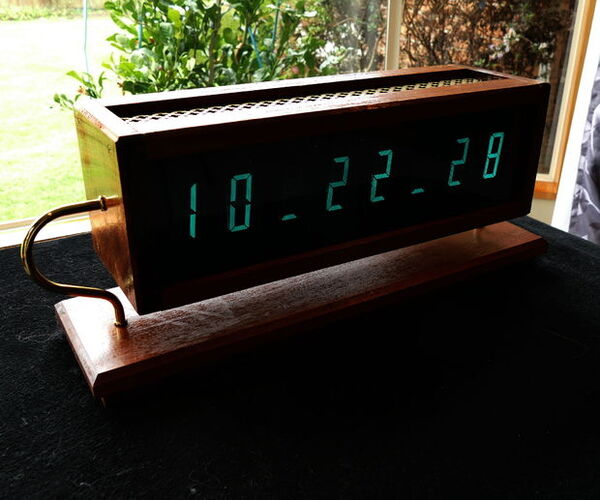
ILC1-1/8L Clock
"Project: ILC1-1/8L Clock This project was undertaken to make use of the ILC1-1/8L VFD tubes, otherwise the project uses standard components and provides the display with time, date, Chimes, pressure, humidity, temperature centigrade, and Fahrenheit. Using the multiplex method to attach each tube in series with the separated 24V supply lines attached to the IC Chip, and the 3.5V heater supply line is attached in series with each tube. EQUIPMENT LIST 1. Arduino Mega 2. 4X4 Keypad 3. Single Pole Switch 4." [...]
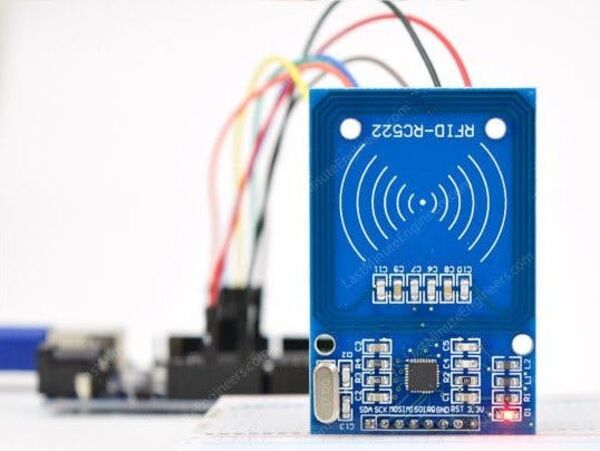
DIY Idea with RFID
"Building an RFIDD access control system. Hello Friends, in this video i will show you How to Make a Rfid Door Lock with led On . im using the Arduino uno and Rfid for Making it. its very portable and very easy to make. Things That i used: Arduino uno : Rfid: Servo Motor : Relay: Jumper wire : Led: Arduino cable: Hardware Overview – RC522 RFID Reader/Writer Module:- What is an RFID reader? RFID tagging is an ID system that uses small radio frequency identification devices for identification and tracking purposes." [...]
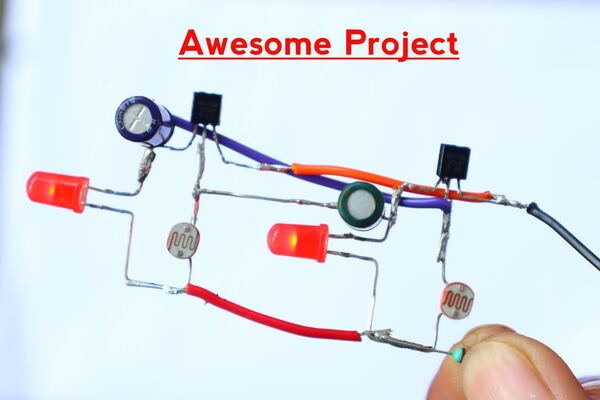
Light Sensitive Double LED Blinker
"Today I am going to make a circuit of Light Sensitive Double LED Blinker.It means LEDs will blink alternate when no light will fall down on the LDR and LEDs will glow continuously when light will be on the LDR. Let's get started," [...]
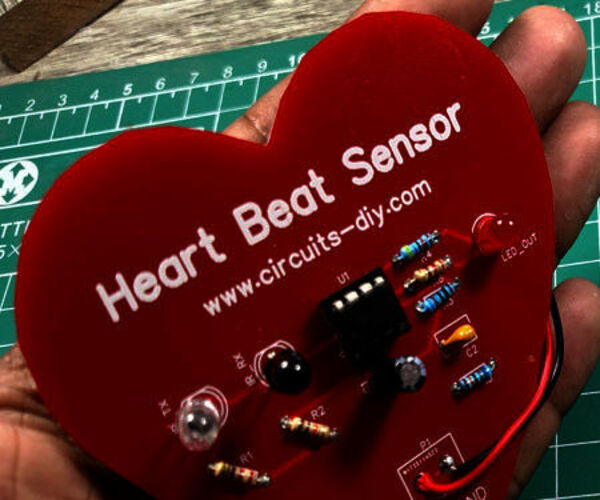
Heartbeat Sensor Circuit Using LM358
"In this tutorial, we will look at How to make "Simple Heartbeat Sensor Circuit" Step by Step completely Heartbeat Sensor is an electronic device that is used to measure the heart rate i.e. speed of the heartbeat. Monitoring body temperature, heart rate, and blood pressure are the basic things that we do in order to keep us healthy. " [...]
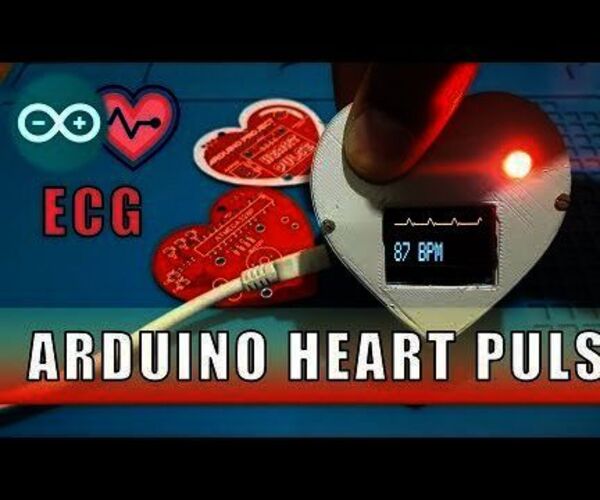
Arduino Heart Beat With ECG Display & Sound
"Hey guys! I Hope you already enjoyed my previous instructable "Arduino LIXIE Clock" and you are ready for a new one, as usual I made this tutorial to guide you step by step while making this kind of super amazing low cost electronic projects which is the "Arduino Heart pulse device". During the making of this project, we tried to make sure that this instructable will be the best guide for you in order to help you if you want to make your own ECG, so we hope that this instructable contain the needed documents. This project is so handy to make specially after getting the customized PCB that we’ve ordered from JLCPCB to improve the appearance of our electronic device and also there is enough documents and codes in this guide to allow you create your Arduino Heart pulse display easily. We've made this project in just 3 days only, just two days to get all the needed parts and finish the hardware making and the assemble, then we have prepared the code to suit our project and start the testing and the adjustment. What you will learn from this instructable: - Making the right hardware selection for your project depending on its functionalities." [...]
ISS Tracking Lamp
"Most of the time, i'm wondering where is the ISS looking up the sky. To answer this question, i've made a physical object to know exactly where is the ISS in real time. The ISS Tracking Lamp is a Internet connected lamp which constantly tracks the ISS and displays it location on Earth’s surface (printed in 3D). Bonus: the lamp also displays the sunny side of Earth with Neopixels! So, in this Instructables, we are going to see the differents steps to build this lamp based on WEMOS D1 Mini, stepper motor, servo motor, laser and 3D parts. I build all by myself, except for the 3D printed Earth, which was purchased on Aliexpress." [...]
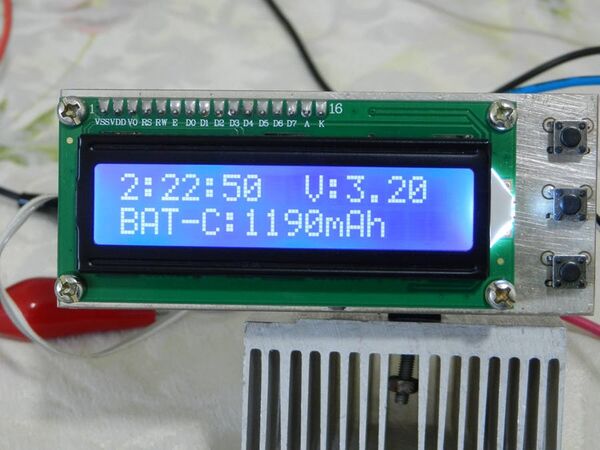
Measuring the Battery Capacity (Lithium-NiMH-NiCd)
"Battery capacity measurement using Arduino [Lithium-NiMH-NiCd]. Features: Identify a fake Lithium-Ion/Lithium-Polymer/NiCd/NiMH battery Adjustable constant current load (can also be modified by the user) Capable of measuring the capacity of almost any kind of battery (below 5V) Easy to solder, build, and use, even for beginners (all components are Dip) An LCD user interface Specifications: Board Supply: 7V to 9V(Max) Battery Input: 0-5V(max) – no reverse polarity Constant Current Load: 37mA to 540mA(max) – 16 Steps – can be modified by the user The true measurement of a battery’s capacity is essential for many scenarios. A capacity measurement device can solve the problem of spotting fake batteries as well. Nowadays fake Lithium and NiMH batteries are everywhere which don’t handle their advertised capacities. Sometimes it is difficult to distinguish between a real and a fake battery. This problem exists in the spare batteries market, such as cell phone batteries." [...]
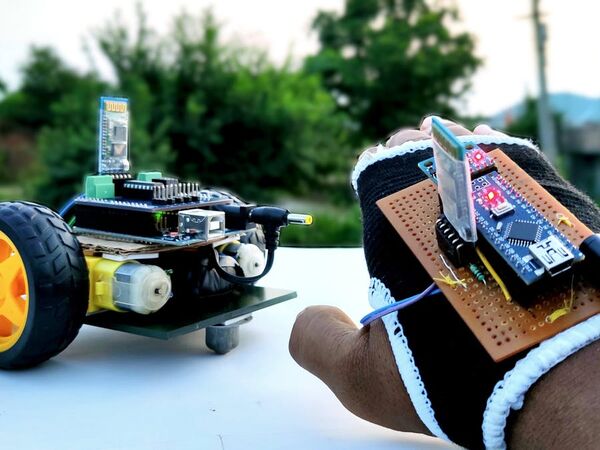
How to Make a Gesture Control Robot at Home
"Control toys like a superhero. A DIY video for how to make gesture-controlled car. This is about how to make a gesture-controlled car by yourself. Basically this is a simple application of MPU-6050 3-axis Gyroscope, Accelerometer. You can do many more things. by understanding how to use it, how to interface it with Arduino and how to transfer its data over the Bluetooth modules." [...]
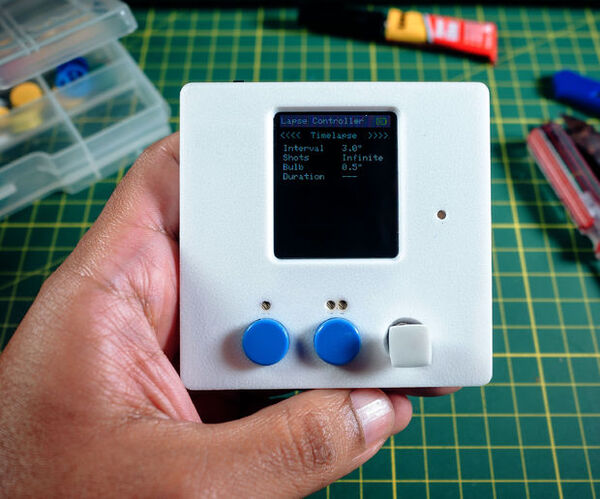
Lapse Controller Mini (LCMini)
"This little thing is a free open source DIY intervalomenter for timelapse photography based on the Teensy 3.2 board. This controller is fully functional and still new features are being added from time to time. You are also able to download the code and do your own modifications. Lapse Controller Mini features Intervals can be defined in 0.1 second steps Easily operable with gloves Easy readable screen (from bright sunlight to black night) Detailed info of the timelapse status (remaining photos, remaining time, etc) Timelapse parameters can be updated while running Supports any camera where an standardized analog release cable is available 12hr operation, battery recharged via micro-USB Technical details Teensy 3.2 board (72 MHz Cortex-M4) 3.5mm stereo jack for camera connection 128x64 TFT Screen that auto turns-off for saving battery 2 switch buttons + nav button switch Rechargable Li-Ion 600mAH Internal buzzer On/off switch RTC (Real time clock) Custom designed 3d printed case This tutorial assumes that you know basic electronic stuff How to solder electronic components How to 3d print (or how request a 3d print) Arduino IDE basics (how to compile, upload firmware, install Teensy for Arduino Ide) Supplies: Attached you will find everything you need to complete this project. Custom PCB - download Schematic/Board files Components list - download here 3d printed case - Cad design and LST files here Firmware - Arduino sketch here" [...]
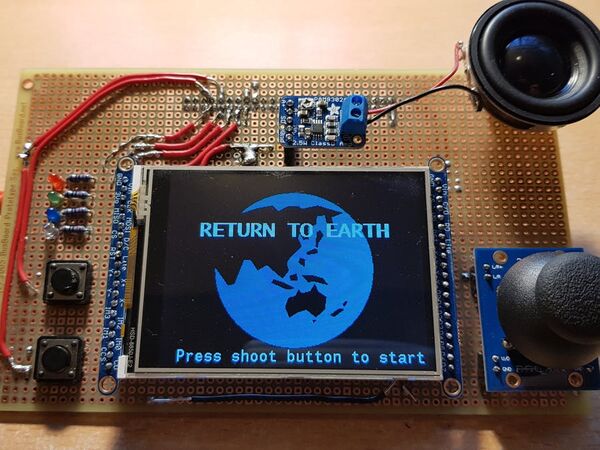
Handheld Game Console Based on STM32F4 Discovery Board
"A handheld game console on STM32F4 Discovery Board that allow you to play a game called Return to Earth - a fun asteroid shooting game. Some background I was taking a driver development course base on STM32F407 MCUs on Udemy and the Embedded System - Shape The World: Multi-Threaded Interfacing on Edx. As a final project, I thought it would be cool to combine all the developed drivers (GPIO, ADC, DAC, SPI...) and build a very own portable game console. The console will allow you to play a simplified version of Asteroid - the famous and fun arcade game. This game was written base on a Youtube tultorial from OneLoneCoder. How to play?" [...]
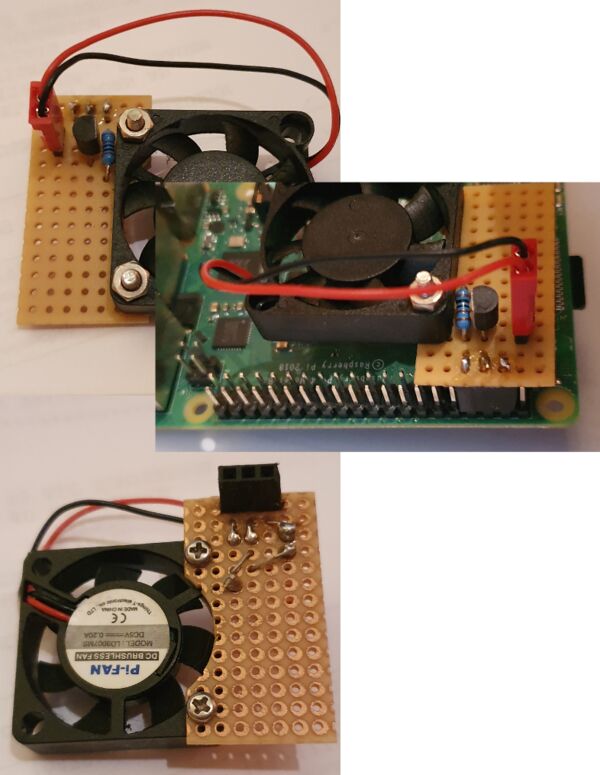
Attaching a CPU fan to a RPi running Ubuntu Core
"When I purchased my Raspberry Pi4 I kind of expected it to operate under similar conditions as all the former Pi’s I owned … So I created an Ubuntu Core image for it (you can find info about this at Support for Raspberry Pi 4 on the snapcraft forum) Runnig lxd on this image off a USB3.1 SSD to build snap packages (it is faster than the Ubuntu Launchpad builders that are used for build.snapcraft.io, so a pretty good device for local development), I quickly noticed the device throttles a lot once it gets a little warmer, so I decided I need a fan. " [...]
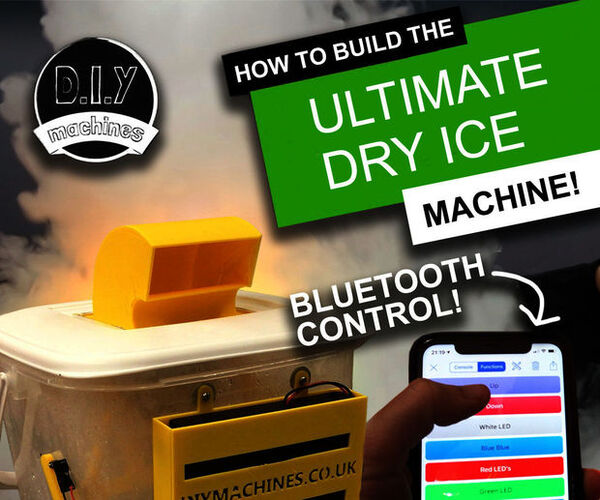
Ultimate Dry Ice Machine - Bluetooth Controlled, Battery Powered and 3D Printed.
"I recently needed a Dry Ice machine for some theatrical effects for a local show. Our budget would not stretch to hiring in a professional one so this is what I built instead. It's mostly 3D printed, controlled remotely via bluetooth, battery powered, portable and includes LEDs for fun effect. You can even design your own nozzle to create different fog patterns.I've included two nozzle designs of my own for you to try. It works great as a stage effect, and will be a hit at any Halloween parties. If you like this Instructable then please consider voting for it in the Halloween contest." [...]
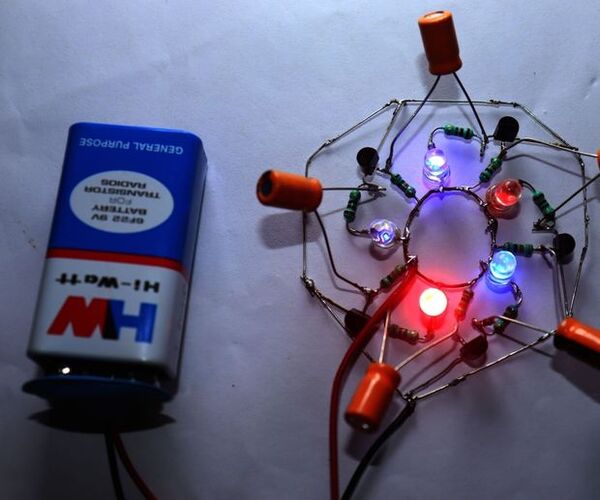
Nice Effect LED Chaser Circuit Using BC547
"Today I am going to make an LED chaser circuit.Its effect is amazing.This circuit I will make using BC547 Transistor. Let's get started," [...]
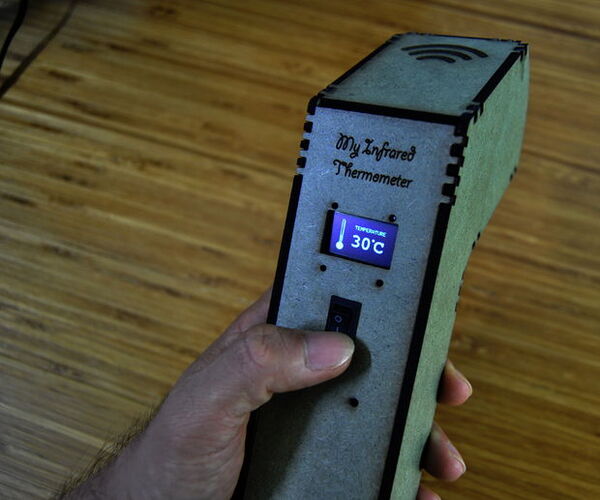
Arduino Infrared Thermometer Gun MDF Case
"This project is for making infrared thermometer with Arduino, the circuit is put in MDF case look-liked a medical infrared thermometer on market. The sensor infrared thermometer GY-906 is used to measure object temperature without contact, it can measure from -70 to 380 degree C in very quick time. Please note that, this sensor can measure in short distance, about 2cm. So you can use this for personal using, or gift to your child, also use it for learn Arduino in funny way It tooks me about 2 weeks of work to complete from circuit, MDF case design, and document. I hope it is meaning for some one" [...]
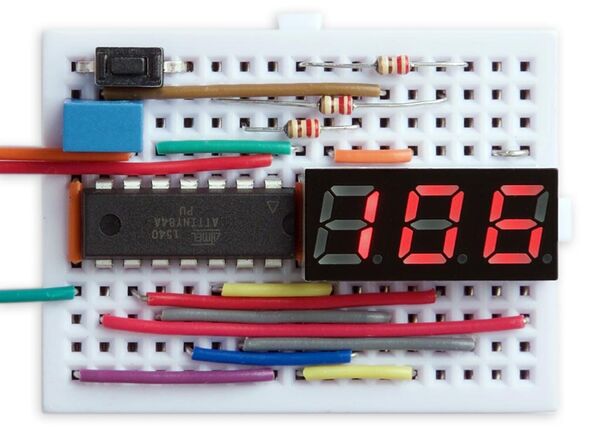
Nano Current Meter
"This project describes a simple low-current meter I devised to check the sleep current of different microcontroller circuits, such as ones based on AVR microcontrollers. It's capable of measuring currents of between 10µA and 30nA with reasonable accuracy, using an ATtiny84 and a few other low-cost parts. Introduction Measuring very small currents accurately is notoriously difficult with normal digital multimeters; they either don't provide a low current range at all, or if they do, they create a voltage drop referred to as the "burden voltage" which can render the display inaccurate. One way round this is to use a precision current adapter, such as David L. Jones's µCurrent [1], but such circuits are expensive. Since I didn't need high accuracy I decided that an alternative approach would be to calculate the current draw based on the time it takes a capacitor to discharge. A capacitor discharging into a resistive load is exponential, like radioactive decay." [...]
That's all Folks!



